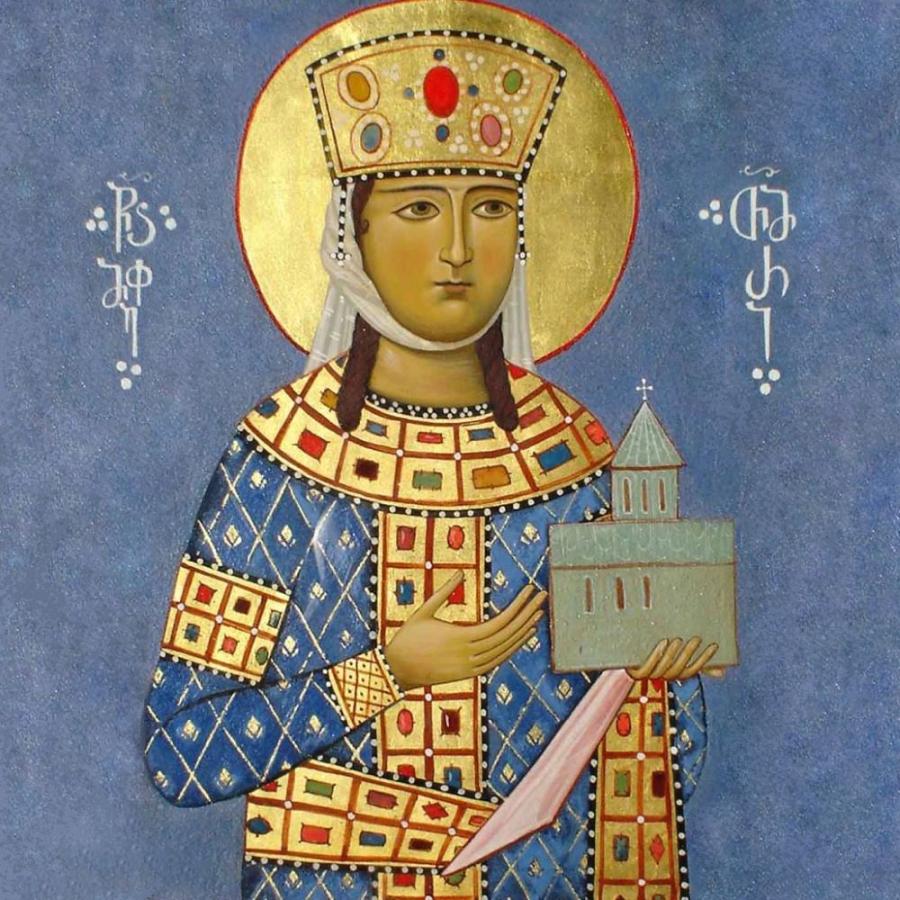
On May 1st, we honor the life of St. Tamara, the most celebrated Queen of Georgia. Born in 1166 after a long wait for a son, it was soon evident to her parents that Tamara would be the only heir of her father. Fearing that a war over his throne would erupt after his death, the king named Tamara as his co-regent when she was twelve years old. At the time of his death six years later, Tamara was recognized as sole ruler of Georgia, often titled “king” to emphasize her position, as she was the first woman to have this responsibility.
Tamar began her rule by calling a church council, asking the clergy to “judge according to righteousness” and to begin with her, not being influenced by power or wealth. "Do away with every wickedness, beginning with me,” she said, “for the prerogative of the throne is in no wise that of making war against God."
She believed that she had an equal role to play in the wellbeing of her state, telling them, “You by word and I by deed, you by preaching and I by the law, you by upbringing and I by education will care for those souls whom God has entrusted to us, and together we will abide by the law of God…You as priests and I as ruler, you as stewards of good and I as the watchman of that good”.
St. Tamara called herself "the father of orphans and the judge of widows.” Although she spent her days dressed in the usual royal finery and attending to state affairs, in the evenings she spent her time in prayer and works of mercy. She made and embroidered clothing which she gave to the poor and also made vestments for the churches. She built many churches and monasteries, was a benefactress also to the Holy Land, Mount Athos, and holy places in Greece and Cyprus, and encouraged the arts and letters throughout Georgia. She ruled the country with such wisdom and godliness that her reign is known as the Golden Age of Georgia.
In preparation for her own death, Queen Tamar had her son George named as co-regent, as her father had done with her. She spent the final years of her life in the Bardzia Cave monastery and fell asleep in the Lord in the year 1213. Perhaps to prevent desecration by any enemies of Georgia, the burial place of the queen has never been revealed and her relics have never been found.
St. Tamara has always been much beloved by the people of Georgia, portrayed in art, poetry, folk song, and literature as the ideal woman and ideal ruler. The poem written in her honor by Shota Rustaveli, "The Knight of the Panther Skin," is considered the masterpiece of Georgian literature.
St. Tamara reminds us that leadership is a call to both servanthood and integrity - that whether we manage a team of employees, teach in a classroom, make decisions for our family, or simply impact others through the daily, ordinary choices of our workplace, each of us can wield whatever leadership we have been granted for the flourishing of those around us. May we follow the steps of St. Tamara in working actively towards the Kingdom, believing that it begins with us, right where we are.
Holy Mother St. Tamara, pray to God for us!
This icon is from the public domain.


